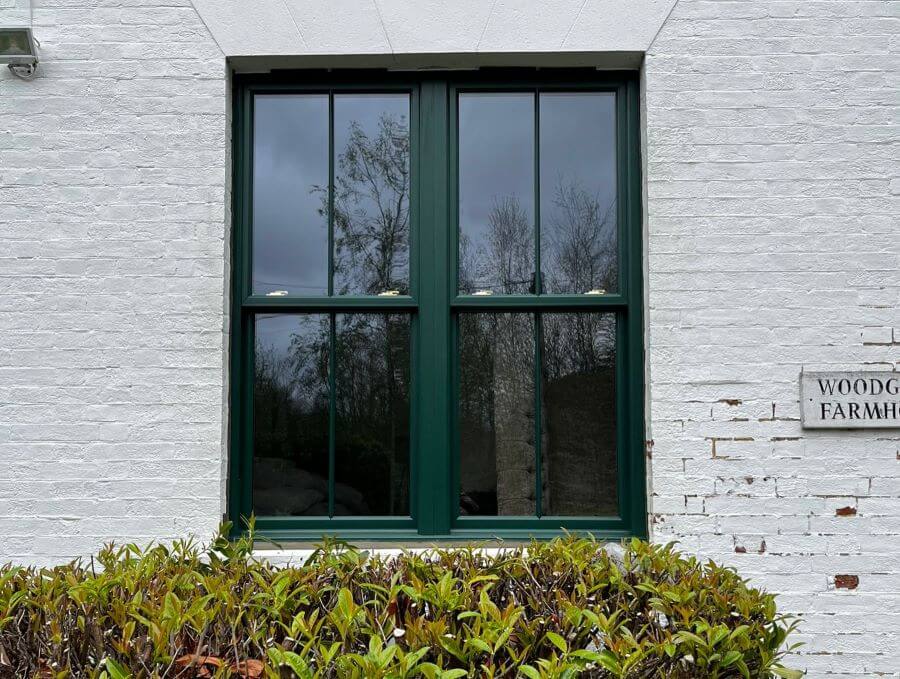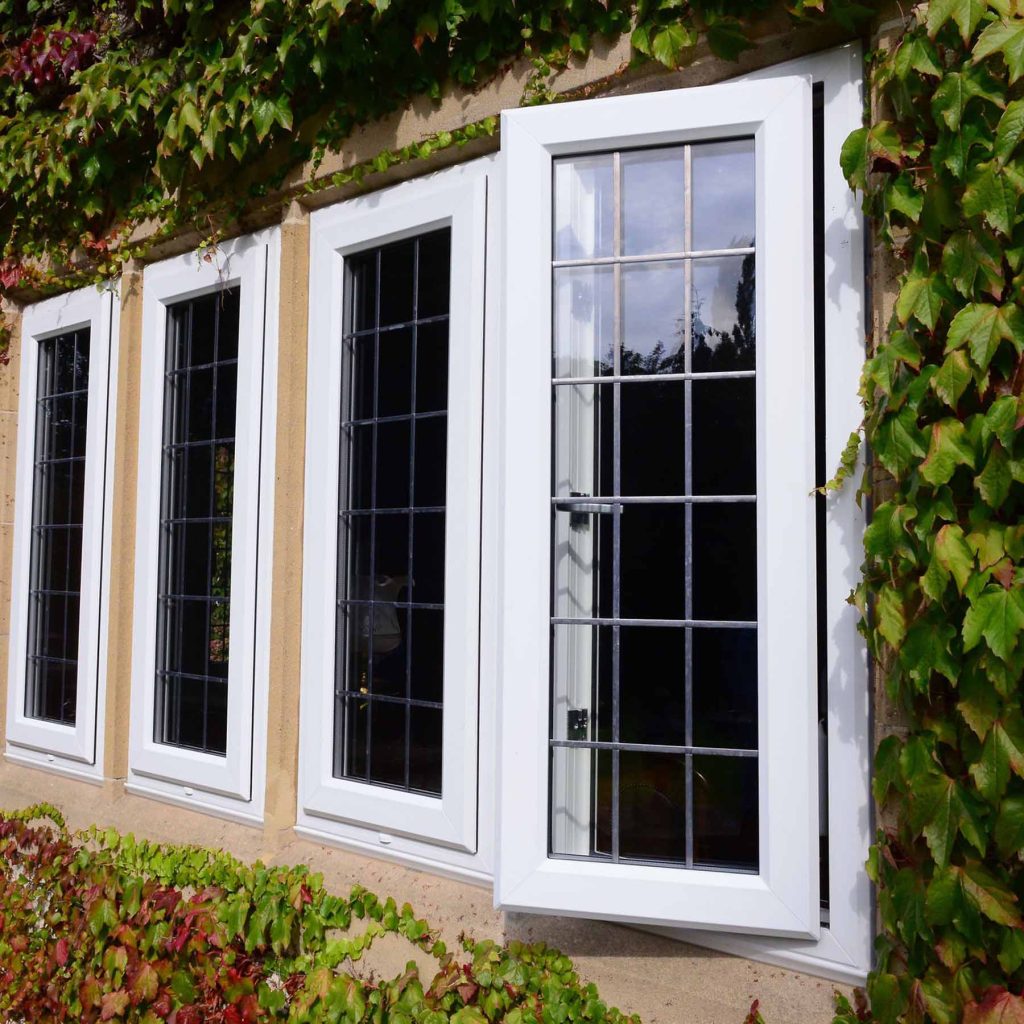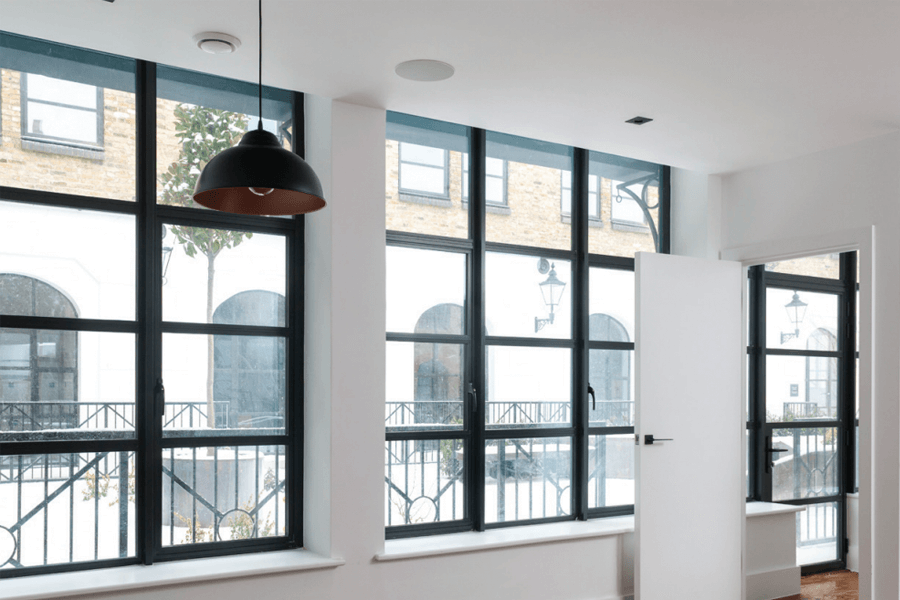It’s a familiar sight in many UK homes, especially during the colder months: you wake up on a winter morning to find your windows obscured by a layer of water droplets. Window condensation is one of those persistent household problems that seems to return year after year, no matter how many times you wipe it away.
For many homeowners across Surrey and Sussex, this misty film on windows is more than just a visual nuisance – it’s the start of a cycle that can lead to more serious issues in your home. That foggy layer forms when warm, humid air inside your home meets the cold surface of your windows, and it’s particularly common in older properties or homes with single glazing.
Condensation in windows is especially prevalent when the temperature difference between the inside and outside of your windows is at its greatest. During these months, many of us find ourselves regularly wiping down window panes and window sills, only to find the moisture returns the very next day.
While some might say a bit of condensation is just part of life, understanding why it happens and how to prevent it can save you from the more serious problems it may lead to down the line.

Why Condensation is More Than Just an Annoyance
Condensation might seem like a minor irritation, but if left unchecked, it can develop into more significant issues.
Mould Growth
Persistent moisture on and around your windows creates the perfect breeding ground for mould. Black mould in particular thrives in these damp conditions and can spread to walls, curtains, and even furniture near affected windows.
Health Problems
The mould that develops from excess moisture can trigger respiratory problems, allergies, and asthma. This is especially concerning for households with young children, elderly residents, or those with existing respiratory conditions.
Damage to Your Home
Over time, constant moisture can damage window frames, particularly wooden ones, leading to rot and decay. It can also seep into walls, causing damp patches, peeling wallpaper or paint, and eventually structural issues that are costly to repair.
Reduced Efficiency
Windows affected by persistent condensation often have failing seals or poor insulation, meaning they’re likely letting heat escape. This leads to higher energy bills as your heating system works harder to maintain room temperature.

What Causes Condensation in Windows?
Understanding the science behind window condensation helps in finding effective solutions. Here’s what’s happening when those water droplets form:
The Basic Science
Condensation forms when warm, humid air comes into contact with a colder surface. The air can’t hold as much water vapour at lower temperatures, so the excess moisture condenses into water droplets on the cold surface.
Everyday Activities That Increase Humidity
Many normal household activities lead to high humidity levels:
- Cooking and boiling kettles
- Showering and bathing
- Drying wet clothes indoors
- Using tumble dryers
Poor Ventilation
Without proper ventilation, all that excessive moisture has nowhere to go. Sealed rooms with little air circulation trap humid air, increasing the likelihood of condensation.
Temperature Differences
The greater the difference between indoor and outdoor temperatures, the more likely condensation becomes. This explains why the problem is usually worse during winter when your central heating is working hard while outside temperatures plummet.
Window Quality
Single-glazed windows or older double glazing with failing seals provide little insulation, resulting in cold inner surfaces where condensation readily forms.
Practical Solutions to Reduce Window Condensation
The good news is that there are several approaches to tackling window condensation, from simple daily habits to more permanent solutions:
Improve Ventilation
- Open windows for short periods each day, even in winter, to allow moist air to escape
- Use extractor fans in kitchens and bathrooms when cooking or showering
- Ensure any existing trickle vents in your windows are open and not blocked
- Consider using a dehumidifier in problem rooms
Manage Moisture Levels
- Close bathroom doors when showering and open the window afterwards
- Avoid drying clothes indoors if possible, or ensure the room is well ventilated if you must
- Vent tumble dryers properly to the outside
Maintain Consistent Heating
- Try to keep your home at a consistent temperature rather than letting it fluctuate dramatically
- Heating rooms properly reduces the temperature difference between the air and the windows, decreasing the likelihood of condensation
Upgrade to Modern Double or Triple Glazing
The most effective long-term solution is to upgrade to high-quality modern windows. Today’s double and triple glazing technology has transformed how windows perform:
- Modern sealed units create an insulating air gap between panes of glass
- Special coatings help maintain a more consistent temperature on the inner pane
- Quality frames and professional installation ensure proper sealing
- Warm edge spacer bars reduce cold bridging around the edges
- Triple glazing provides even greater thermal efficiency.
Our Window Solutions for Condensation Problems
At BSF Windows, we’ve helped countless homeowners across Surrey and Sussex tackle persistent condensation issues with our range of energy-efficient windows.
uPVC Windows
Our uPVC windows are designed specifically with the British climate in mind. They feature multi-chambered profiles that provide excellent thermal insulation, keeping the inside pane warmer and significantly reducing the risk of condensation.

Aluminium Windows
Our aluminium windows combine sleek, modern aesthetics with impressive thermal performance. Despite the conductive properties of aluminium, our windows incorporate thermal breaks that prevent cold transfer, keeping inner surfaces warmer and minimising condensation.

Saying Goodbye to Misty Windows
Condensation on windows is a common issue in UK homes, but it doesn’t have to be something you simply live with. By understanding the causes and implementing some of the solutions we’ve discussed, you can significantly reduce or even eliminate this problem.
For many homes, especially those with older windows, upgrading to modern, energy-efficient windows provides the most comprehensive solution. Not only will you see a dramatic reduction in condensation, but you’ll also benefit from better heat retention, lower energy bills, reduced outside noise, and improved security.
If you’re tired of wiping down misty windows every morning or concerned about the potential damage from persistent moisture, we’re here to help.
For a free, no-obligation consultation about window condensation issues in your Surrey or Sussex home, contact us on 01293 408 713, email us at bsfwindows@gmail.com, or use our online contact form.
Frequently Asked Questions
Why do I only get condensation on some of my windows?
Different rooms produce different amount of condensation (kitchens and bathrooms produce more than living rooms, for example).
Can condensation damage my windows or home?
Yes. Persistent condensation can cause mould growth, rot wooden frames, and lead to damp walls or peeling paint. Over time, it can also indicate poor insulation or failing window seals that can cost you money with reduced efficiency.
Will replacing my windows definitely solve my condensation problems?
Modern, properly installed double or triple glazing will significantly reduce or eliminate condensation on the inside surface of your windows in most cases.
Why does condensation form more on my bedroom windows?
Bedroom windows often collect the most condensation because warm air from your body and breath contains a lot of moisture, especially overnight when doors and windows are closed. Without adequate ventilation, this excessive humidity builds up and condenses on the cold surface of the glass. Opening a window slightly can help reduce the amount of water that forms overnight.
What’s the best way to stop condensation forming on the inside of windows?
There are several simple steps you can take to control the causes of condensation. Make sure your home has good ventilation, limit the use of tumble dryers and washing machines in closed rooms, and maintain consistent heating. Wiping away drops of water may help in the short term, but upgrading to new windows with modern insulation is often the best long-term solution.
